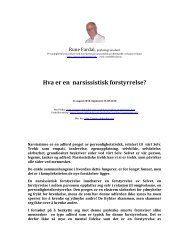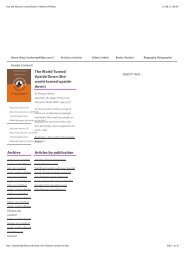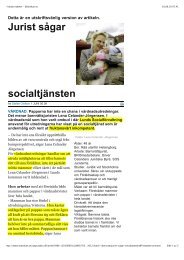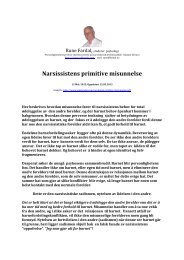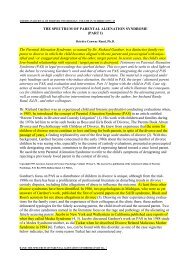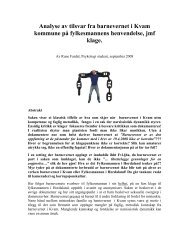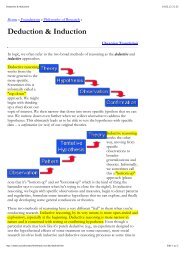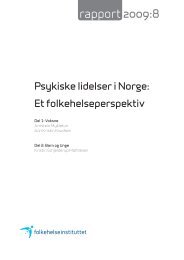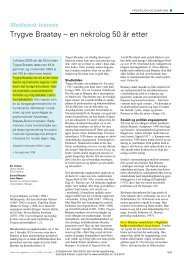The origins of narcissism and narcissistic personality disorder a
The origins of narcissism and narcissistic personality disorder a
The origins of narcissism and narcissistic personality disorder a
Create successful ePaper yourself
Turn your PDF publications into a flip-book with our unique Google optimized e-Paper software.
58 JOHN S. AUERBACH<br />
this chapter makes regarding the concept <strong>of</strong> primary <strong>narcissism</strong>, the<br />
critique <strong>of</strong> Mahlerian theory will not be repeated here.<br />
Influenced by Stern’s (1985) empirical <strong>and</strong> conceptual critique <strong>of</strong><br />
Mahler’s ideas, Kernberg (1991) has come to reject the notion <strong>of</strong> a<br />
normal autistic state but retains, somewhat ambivalently, the concept<br />
<strong>of</strong> normal symbiosis. Because Kernberg (1975, 1976) has long regarded<br />
the overcoming <strong>of</strong> primary fusion between self <strong>and</strong> object as the first<br />
stage in normal development <strong>and</strong> has long championed Mahler’s ideas,<br />
this recent rejection <strong>of</strong> normal autism constitutes a major change in<br />
his thinking. To his credit, Kernberg (1991) demonstrates openly a<br />
willingness to allow empirical findings to influence his ideas. Nevertheless,<br />
his theory <strong>of</strong> development still begins with a state <strong>of</strong> symbiotic<br />
fusion from which infants then begin to differentiate, even though his<br />
conceptualization <strong>of</strong> <strong>narcissistic</strong> <strong>personality</strong> <strong>disorder</strong> as the result <strong>of</strong> a<br />
pathological self-formation (see Kernberg, 1975, 1984) does not require<br />
this assumption.<br />
Finally, attempts to mediate between the autistic <strong>and</strong> the objectrelated<br />
infant can be found in the work <strong>of</strong> Kohut. In his early work,<br />
that most influenced by his ego-psychological forebears, Kohut (1966,<br />
1971) refers to an archaic body-mind self that is undifferentiated <strong>and</strong><br />
<strong>narcissistic</strong>ally walled <strong>of</strong>f from objects <strong>and</strong> that constitutes the first<br />
stage in development. In his later writings, after his rejection <strong>of</strong> traditional<br />
drive theory, Kohut’s (1977, 1984) focus on the emergence <strong>of</strong><br />
the cohesive self in the second year <strong>of</strong> life results in the eventual<br />
disappearance <strong>of</strong> references to this entity. Although Kohut’s theories<br />
contain many problematic, if not logically contradictory, features (Eagle,<br />
1984; Greenberg & Mitchell, 1983), many thinkers who challenge<br />
the received psychoanalytic view <strong>of</strong> infancy (e.g., Beebe & Lachmann,<br />
1988; Lachmann & Beebe, 1989; Lichtenberg, 1983; Stern, 1985) are<br />
heavily influenced by Kohut’s ideas but apply them with far greater<br />
logical rigor <strong>and</strong> consistency. Kohut’s later theories may not require a<br />
stage <strong>of</strong> a primary objectlessness or fusion at all.<br />
Prenatal Metaphors for Human Infancy<br />
In reviewing, however cursorily, the views that major psychoanalytic<br />
thinkers hold about infant development, one readily sees the ease with<br />
which theoretical positions become entrenched <strong>and</strong> the slowness with<br />
which they change. One crucial reason for this unfortunate state <strong>of</strong>




